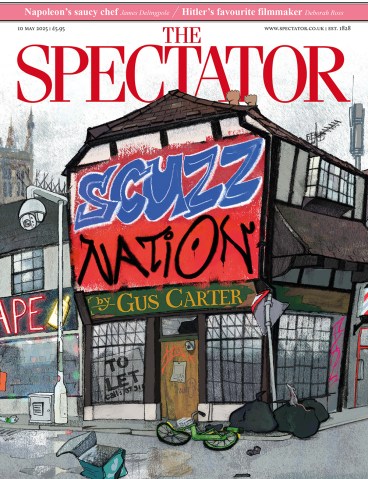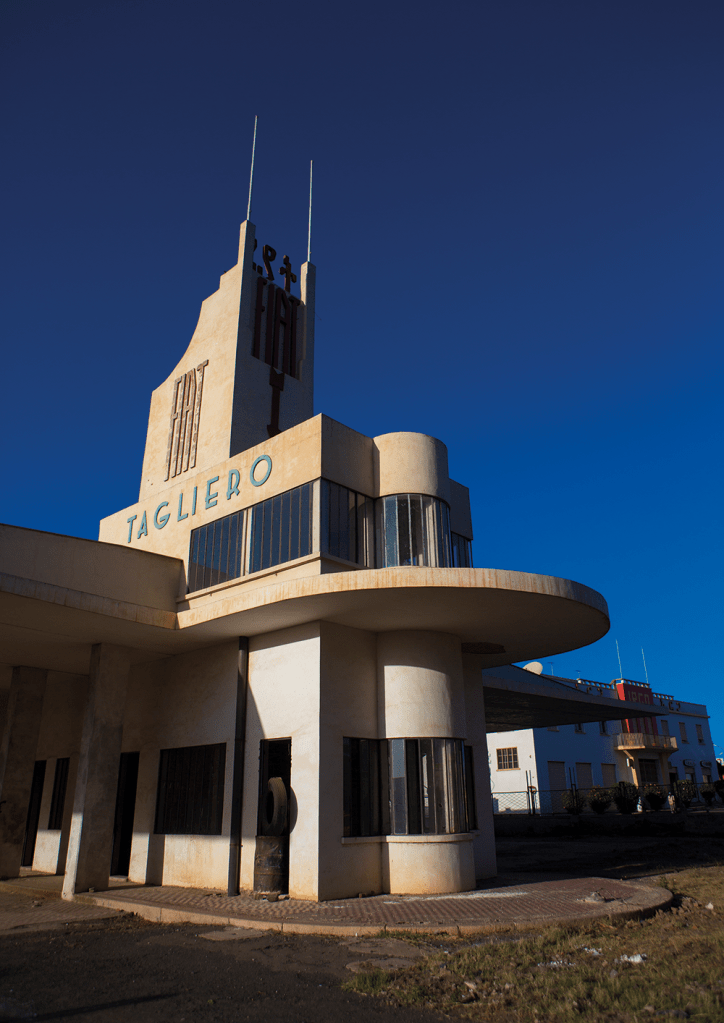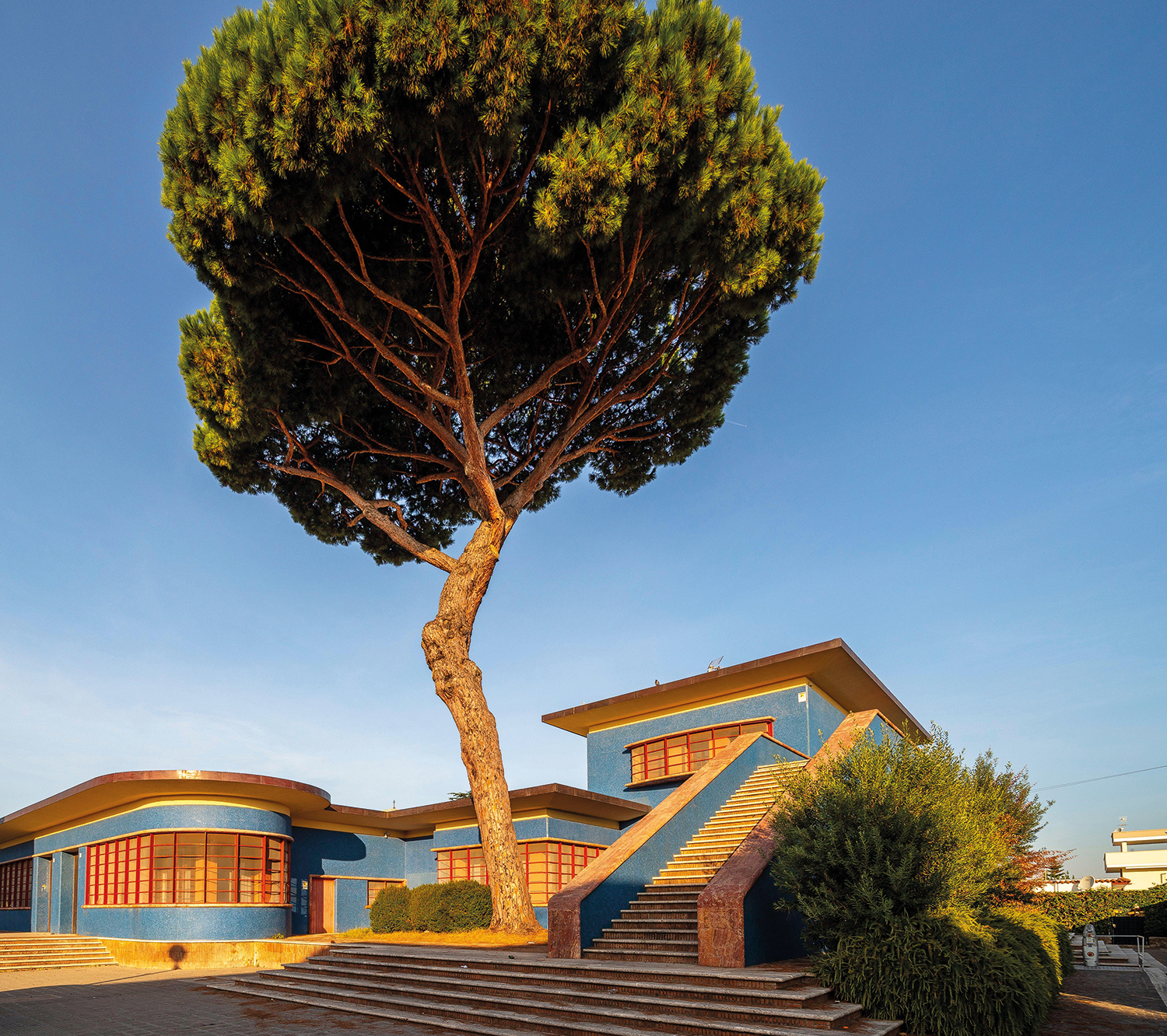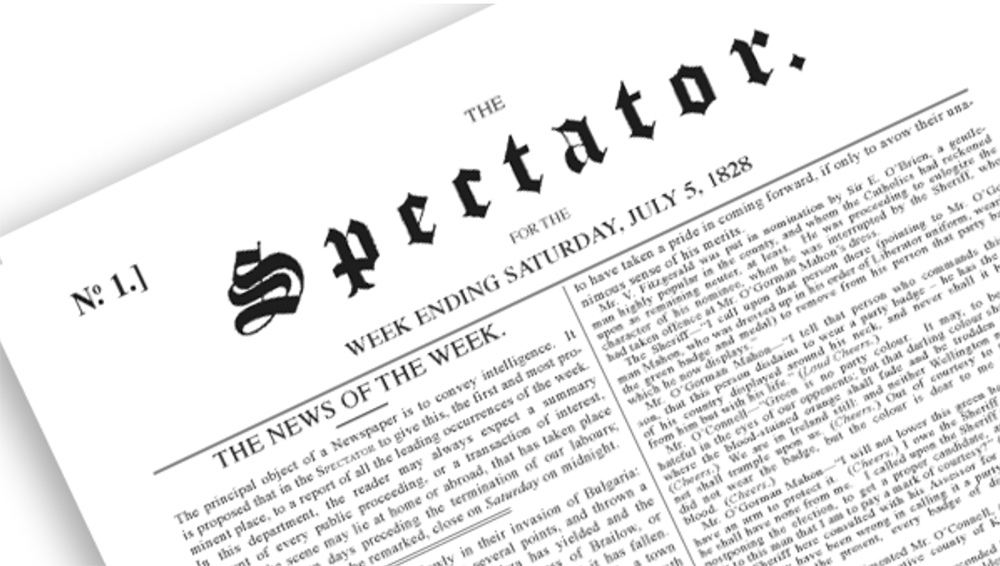
The jazz style was the blowsy filling between the noxious crusts of two world wars. More than 30 years passed between its flourishing and its remonikered second coming as art deco, no longer gaudy ephemera, now a legitimate addition to the inventory of fashions. The coinage was initially ascribed to the antique dealer John Jesse. It is, more probably, Bevis Hillier’s. He was a scholar of the style, then organiser of its first retrospective, far ahead of the game, in Minneapolis-St Paul in 1971. The Twin Cities rival Tulsa in their abundance of ziggurats, sunbursts, sans-serif signs (favoured for appearance rather than function), streamlined-everything to effect a quick getaway, bas-relief depictions of heroic labourers that recall the USSR and Nazi Germany (art deco, like many architectural idioms across the ages, transcends opposing regimes).
Styles are indiscriminate, meaningless, and they invariably triumph over myth systems and theistic baloney, which have no material presence. Art deco was, of course, initially neutral, apolitical, a blank canvas until infected by ideologies or dogmas, adopted by trade or commerce. Everything was susceptible to this style’s seductiveness, indeed its devotees boasted that it was ‘the last total style’. There have no doubt been other ‘last total styles’ before and since. Styles are not apparent when they are all about us and we are lost in the smog of the present; anonymity is a bereavement that causes us not to see. Styles demand distance, woods to tell from trees, taxonomies to guide us.
Stallholders in Portobello Road and Chelsea Antiques Market were not perhaps scholars but when their eyes settled on a lush chunk of sinuous Lalique or a vitrolite cocktail trolley they uttered a new barker’s cry: ‘It’s dekkaaaa!’ But was it? The 1925 Paris Exposition internationale des arts décoratifs et industriels modernes – whose name has stuck as shorthand a century later – was, in the manner of all great exhibitions, a sort of trade fair whose boastfulness belied the idea of cosmopolitan brotherhood. Competitive variety was more the ticket. That said, one country’s am-dram national costumes and self-parodic vernacular architecture was as predictably ephemeral and ostentatious as the next’s.
Konstantin Melnikov’s Soviet pavilion belonged to a period before Stalin had suppressed the avant-garde in favour of comrade-friendly carnivalesque architecture. The enchanting Michel de Klerk, finest architect of his generation, had died young, two years before the exhibition; the Dutch pavilion does not disguise its debt, it honours him and his invention and rues the future that would be lesser without him. Despite their contrasting provenances these works were initially allied by a prospective optimism that would diminish with ever-accelerating speed. The two decades that art deco signifies witnessed changes that were not merely the result of squalid polities. Taste, technology, the spread of wealth, blue dyes for dogs, shingle cuts, dance crazes, cocaine and the democratisation of travel were just as pertinent – a Baltic cruise was now within the means of, say, a probationary teacher.
The Belgian director Harry Kümel wanted his lesbian vampires to drive a Tatra T77 in Daughters Of Darkness, but in 1970 he couldn’t find one this side of the Iron Curtain (hence the film’s Bristol 403). The Tatra T77 was first produced in 1934. The future was stuck in a parallel world: the past. The future of 2025 hardly differs from that of 1970 or 1934, and one or other variant of art deco is forever labelled ‘futuristic’. The Tatra became an archetype, the stealthily sinister model for all consequent ‘concept cars’. Its contemporaries had been laden with dotage and running boards. They resembled covered wagons stumbling to Utah short of a dobbin or two. They were from the previous century. So too were many exhibition buildings, gamely failing to suppress the ornamental idiosyncrasies of the belle époque and art nouveau while timidly keeping modernism at arm’s length.
The 1925 art-deco exhibition supplied the mise-en-scène for the prelude to mass murder
The Great War was not long past, a fresh wound shared everywhere, yet unspoken. The art-deco exhibition implicitly proposed instead a bogus collective memory, an institutionalised lie that cheerily ignored the millions of dead.
It turned its back on art and truth: they are not properties of the decorative. Morality exempts itself – Ruskin and Morris apart. So it ignored the streets littered with cripples parading their ad-hoc prostheses, amputations, sites of former limbs, missing parts. The witnesses of the age, Beckmann, Dix, Grosz were not invited to the party. Art deco was then an escape, an anticipation of a better future – achieved by mass delusion. As we know, the wrong mass delusion. The cheap musical hedonism of bars, shiny surfaces, the Korky the Cat façade of the Avenida Cinema in Burgos, interesting sex, enamel cigarette cases, white telephones and bias-cut fatales were all destroyed by the terrors of purity, immaculacy and cleansed mountain tracks.
The exhibition and its much-imitated motifs had supplied what turned out to be the mise-en-scène and props for the prelude to further belligerence and mass murder, a prelude of foreboding that the sentient read correctly and the insentient didn’t. It was a mask, a distraction, just as its title promised. And it gave veneer and frivolity a bad name. Most of the factories lining the arterial roads leading west from London are exercises in gurning façadeism, one-dimensional shams without admitting it as 18th-centuries follies had done. Alongside these factories – many mistreated, others demolished by louts like ‘Lord’ Victor Maffews – there were villages such as Crittall’s Silver End and Bata’s East Tilbury, houses in the home counties for the arty haut-bourgeoisie, outer suburban apartment blocks in Pinner, Sheen and Stanmore, seaside villas at Frinton, Southend and Sandbanks, Odeons, Regals and Gaumonts.
Here was the face of architecture acceptable to those who suffered the misfortune of not familiarising themselves with the theories of hardline modernists. Contrary to conventional wisdom there is not a lot of art deco here – now known, occasionally, as B-movie architecture, or modernish, or more often as moderne, the ‘e’ is for exuberance. Because of the shortage, it is the same invariable examples that are hauled out in the pretence that they are typical of interbellum Britain. They aren’t. It was populist but not especially popular. The concentrated effects of the exhibition are more readily found in former colonial cities – Casablanca, Maputo, Tetouan, Leopoldville, Asmara (see below) – and in Sabaudia and Latina, Mussolini’s new towns on the reclaimed Pontine Marshes.

No sign of imperial Britain, but plucky Belgium is endowed with numerous works in all the idioms that shelter beneath the capacious umbrella of art deco. Brussels famously possesses thousands of art-nouveau buildings. But the later idiom is overlooked. It ought not to be. The suburbs of Brussels, Antwerp and Liège are endlessly impressive tours de force of collective accord, individual invention and architectonic paranoia.
Any aspiring art-deco plagiarists beware, there is a tendency for architects to bring actions against their copyist rivals – though given the number of rip-offs of, say, the temples at Agrigento it should be evident that all architects, not just the great, steal with abandon and routinely scorn the notion of originality. The resort to the law has in recent years even spread to tattooists.
The Musée des Arts décoratifs, Paris, are hosting a year of exhibitions dedicated to art deco, culminating in 1925-2025. Cent ans d’Art déco, which will run from 21 October until 29 March 2026.








Comments